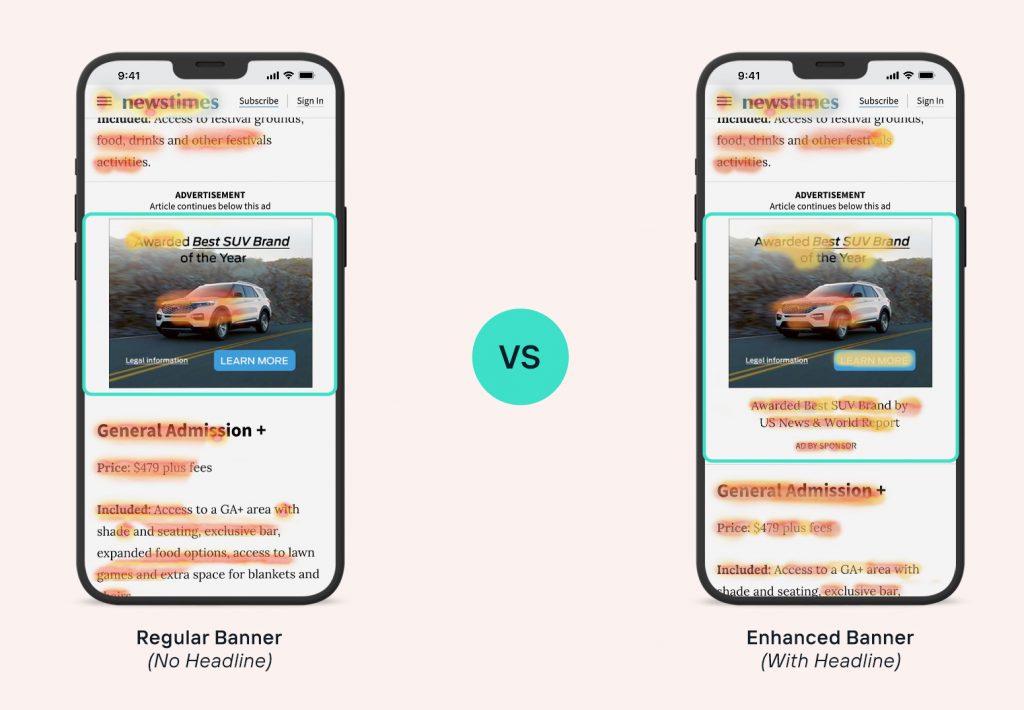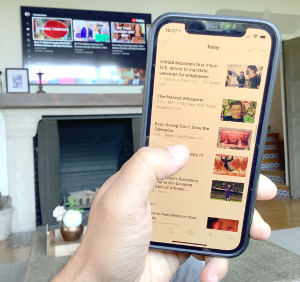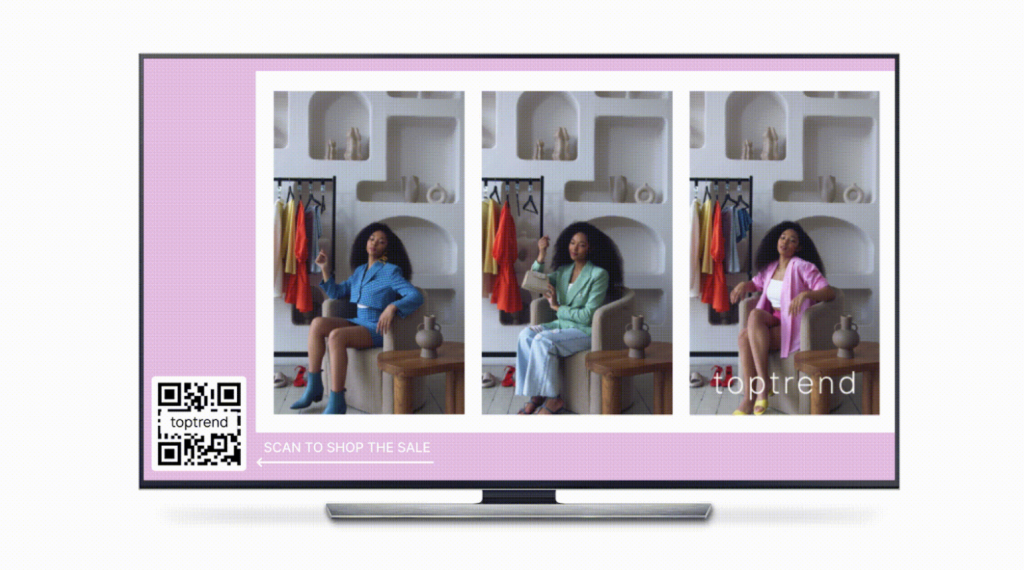How Ad Tech Can Benefit From Human-Centric Design
by Grace Dillon on 25th May 2022 in News

In association with Sharethrough
Ahead of ATS London 2022, Wa'el Aboutanos, director of business development in EMEA at Sharethrough, explains the benefits of human-centric design, how it can be implemented to improve existing formats, and why it will be important to building the advertising of the future.
What do Apple, Starbucks, and Disney have in common? They use human-centric design.
Human-centric design is a core principle of leaders in most industries, however, it is not as prevalent in the ad tech ecosystem. By better understanding humans and their interactions with the ads delivered to them, advertisers can increase their performance, improve their user experience and boost the rate at which new users acquire their solutions. This post will cover what human-centric design is, how it is used in other industries, and how advertisers can apply the concept to their different ad formats – including future ad formats in the metaverse and web3.
What is human-centric design?
Human-centric design (HCD) is the practice of prioritising people in the problem-solving and design process and considering them more as complex human beings than as customers or users when developing products, services, and experiences.
How is human-centric design used in other industries?
The top-performing companies in most industries, including tech, direct-to-consumer, and retail, use human-centric design.
By placing the customer at the core of its design process, Apple transformed its failed Newton PDA into the iconic iPhone. Continuing to apply HCD, Apple understood that when people take their headphones off, they are probably not listening to music or talking on the phone. So Apple built their AirPods to automatically pause or end the call when you take them off, to match people’s behaviours and expectations.
There’s an app for that

Wa'el Aboutanos, director of business development in EMEA, Sharethrough
Apple’s use of HCD extends beyond just their computers, phones, and accessories. The iPhone made the use of apps popular, paving the way for Airbnb and Uber to flip entire industries on their heads. By developing their services from the perspective of the average person, Airbnb and Uber made sharing your home and car with strangers a normal thing.
This is not unique to unicorn companies like Apple, Airbnb, and Uber. Companies like Starbucks, Ford, IBM, Walt Disney and other widely known brands outperform the competition by over 200% by focusing on a human-centric design.
Not-so-human advertising
Today’s ad experiences are invasive, interfering, and just plain irritating. So why hasn’t human-centric design been applied to advertising if the concept is so simple?
Accustomed to social media platforms and their modern design of ads, consumers’ online behaviour and expectations changed in just a matter of years. Were social media platforms the catalyst for this behaviour change, or did they design their ad delivery for the human experience?
So how can the rest of the advertising ecosystem meet the needs and expectations of people by applying a human-centric design approach to how ads are delivered?
Human-centric advertising
At Sharethrough, we set out to study how people behave and interact with the ads they see every day. Our goal was not to reinvent the ad wheel but to better understand how we can improve existing ad types like banners, video, and CTV to better fit human behaviours and expectations, which ultimately leads to better ad performance.
Applying HCD to display advertising
We used eye-tracking technology to uncover how people interact with display ads and how to apply a human-centric design approach. What we found was that people look at the headlines first when they scan through pages but, due to the saturation of banner ads, consumers have been trained to skip past banners.
So we wondered if banners with a headline that fits in with the surrounding page design would improve attention.
We tested banners with and without headlines, which used the same text as the banner copy on real humans scrolling through content sites. The results were even better than expected. By adding a headline that fits in, consumers were two and a half times more likely to pay attention to the banner ad and comprehend the advertiser’s messaging.

Automatically add headlines under your banner ads with Enhanced Banners from Sharethrough
Applying HCD to video advertising
Not much has changed in video advertising, aside from the addition of a “skip ad” button to pre-roll videos, so it comes as no surprise that an increasing number of people are skipping pre-roll ads. How do we apply a much-needed human-centric design update to video advertising?
We conducted another study on how people interact with video ads and the results revealed that 75% of people keep their devices on mute while videos play and prefer videos that have captions. Referencing the same eye-tracking study that inspired us to add headlines to banners, we tested videos with captions in the headline space against videos without captions. The results showed people were 56% more likely to comprehend the main message of the video ad with what became our Dynamic Captions: an automatic way to add captions to videos in reading environments.


Dynamic Captions increase comprehension of your ads by 56% more than ads without captions
Solving the TV commercial attention problem with HCD

TVs faded into the background as cellphones became consumers’ primary screens
The growth of CTV over the last few years shows no signs of slowing down, but our early research efforts have already revealed the channel’s most pressing issue: TV ads have a serious attention problem. That research indicated that 79% of people pull out their phones the moment their TV cuts to a commercial break. So we turned our human-centric research attention to understanding how CTV can improve the TV commercial experience and win people’s attention back.
We looked for a solution that could turn the fact that most people are on their phones when TV commercials start into an opportunity to capture people’s attention. We hypothesised that the comeback of QR codes could capture the attention of viewers and make use of the devices they are already holding. So we tested ads on 1,000 different viewers and discovered QR codes on TV advertisements can help increase viewers’ attention by 12%.
Additionally, scanning QR codes bridge the gap between CTV and smartphones, enabling advertisers to measure performance as they do with click-through rates.

QR Codes increase consumers’ attention to your TV ads by 12%
HCD is needed to build the metaverse
The metaverse and the decentralised Web3 are concepts that unify disparate identities and experiences into one avatar – one identity – that you can step into when you enter the metaverse. Be it through VR headsets, computers, or phones, the metaverse will allow people to access Web3 in a way that feels more like walking around downtown or browsing through stores in a mall.
This raises an interesting question, what will advertising look like in the metaverse and Web3?
Whatever metaverse ads look like, it is critical that we as an industry do not rush to saturate it with ads. Rather, the focus should be on studying the behaviours of people in the metaverse and figuring out how advertising can apply human-centric design to both fit with those behaviours and, hopefully, add value to those experiences.
Early signs of metaverse ads are promising, with a few brands having experimented with how to provide value through virtual experiences, such as Travis Scott's concert in Fortnite or Vans offering virtual goods for Roblox avatars in "Vans World" skatepark.
HCD in advertising is necessary
Since human-centric design is not a tangible KPI for advertisers to consider, the best way they can apply it is to read, study, and put themselves in their audience's shoes and consider how they will respond to the ads in each environment. Will their phone likely be on mute? Then make sure video ads have captions. Will their attention be on their phone during TV commercials? Then think about how you can pull their attention back through the creative or enhancements like QR codes. Those small but meaningful steps can go a long way towards improving advertising performance.
ATS London 2022 will be taking place at Central Hall Westminster on 14th and 15th June. Tickets and further details are available via the ATS London homepage.








Follow ExchangeWire